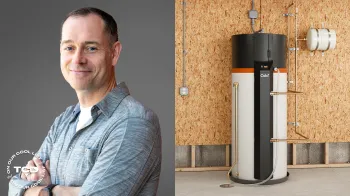3D printing has opened up new possibilities across multiple fields, from food production to housing. Now, its use in designing the next generation of sustainable technologies could be a game-changer.
Microbial electrochemical systems have broad applications for green tech, including wastewater treatment, energy generation, and chemical synthesis, as a report by SciTechDaily explained.
These devices leverage microorganisms to transfer electrons, and MES can both degrade pollutants and generate electricity, making them a future-forward tool for sustainable design.
Among the advantages of using 3D printing for MES is the ability to rapidly prototype and customize reactor designs, as the report detailed. This gives researchers the flexibility to optimize fluid dynamics and mass transfer within the reactors, helping improve performance.
The precision of 3D printing offers the ability to fabricate electrodes with custom geometries and materials, improving biocompatibility and electron transfer in electrodes, which the report states is essential in environmental applications.
When applied in wastewater treatment, MES could more efficiently remove pollutants, providing people with a clean water supply and reducing contaminants that can leach out into surrounding ecosystems.
Watch now: Climate scientist dispels misconception that burning wood pollutes more than burning dirty energy
3D printing has even helped companies develop more efficient filtration systems for wastewater, where less energy-intensive flows and improved mesh design can reduce costs for the sector.
As the United Nations shared, dirty fuels account for 80% of global energy production, but clean energy is on the move. About 29% of the energy produced worldwide comes from renewable sources, and more efficient tools can only help advance that.
SciTechDaily shared the thoughts of environmental engineering expert Yifeng Zhang on how 3D printing in microbial electrochemical systems is a game-changer, leading to more effective resource utilization and reduced planet-warming emissions.
"The integration of 3D printing technology into MES represents a major breakthrough. It provides the precision and flexibility needed to optimize reactor designs and electrode structures, which are critical for enhancing system performance," said Zhang.
TCD Picks » Quince Spotlight

|
Should we be digging miles beneath Earth's surface? Click your choice to see results and speak your mind. |
"This innovation not only accelerates the development of sustainable environmental technologies but also opens up new avenues for addressing global challenges in energy and waste management. The potential applications are vast, and we are excited to see how this technology will continue to evolve and impact the field," Zhang added.
Join our free newsletter for weekly updates on the latest innovations improving our lives and shaping our future, and don't miss this cool list of easy ways to help yourself while helping the planet.

















